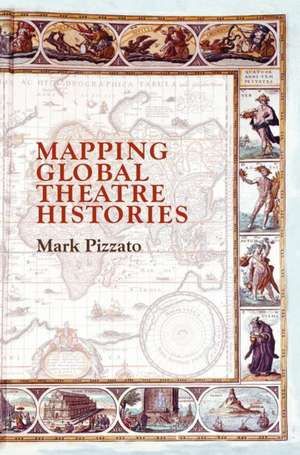Mapping Global Theatre Histories
Autor Mark Pizzatoen Limba Engleză Paperback – 7 mai 2019
Preț: 362.93 lei
Preț vechi: 437.26 lei
-17% Nou
Puncte Express: 544
Preț estimativ în valută:
69.44€ • 72.51$ • 57.48£
69.44€ • 72.51$ • 57.48£
Carte disponibilă
Livrare economică 15-29 martie
Livrare express 01-07 martie pentru 31.69 lei
Preluare comenzi: 021 569.72.76
Specificații
ISBN-13: 9783030127268
ISBN-10: 3030127265
Pagini: 274
Ilustrații: XV, 322 p. 36 illus., 34 illus. in color.
Dimensiuni: 155 x 235 x 18 mm
Greutate: 0.48 kg
Ediția:1st ed. 2019
Editura: Springer International Publishing
Colecția Palgrave Macmillan
Locul publicării:Cham, Switzerland
ISBN-10: 3030127265
Pagini: 274
Ilustrații: XV, 322 p. 36 illus., 34 illus. in color.
Dimensiuni: 155 x 235 x 18 mm
Greutate: 0.48 kg
Ediția:1st ed. 2019
Editura: Springer International Publishing
Colecția Palgrave Macmillan
Locul publicării:Cham, Switzerland
Cuprins
1. Theatricality in Deep History and the Human Brain.- 2. From Prehistoric to Ancient Theatricality.- 3. Greco-Roman Beginnings of "Theatre" (as Theatron/Theatrum).- 4. Traditional Forms of Asian Theatre.- 5. Medieval Europe and Premodern Africa, Australia, and the Americas.- 6. Early Modern Developments in Italy and France (1400s-1600s).- 7. Early Modern Mixtures in England, Spain, and the New World (1500s-1600s).- 8. Restoration and Baroque Revolutions (1600s-1700s).- 9. Romanticism, Melodrama, and Minstrelsy (1800s).- 10. Modern Realisms and Anti-Realisms (Late 1800s to Early 1900s).- 11. Mid-Twentieth Century Euro-American Innovations.- 12. Postmodern Theatre in the US (1950s to 2010s).- 13. Postmodern Theatre in Europe (1950s-2010s) .- 14. Global, Postcolonial Theatre.
Notă biografică
Mark Pizzato teaches theatre history, drama, and film at UNC-Charlotte, USA. His books include Edges of Loss (1998), Theatres of Human Sacrifice (2005), Ghosts of Theatre and Cinema in the Brain (2006), Inner Theatres of Good and Evil (2011), and Beast-People Onscreen and in Your Brain (2016).
Textul de pe ultima copertă
This textbook provides a global, chronological mapping of significant areas of theatre, sketched from its deepest history in the evolution of our brain's 'inner theatre' to ancient, medieval, modern, and postmodern developments. It considers prehistoric cave art and built temples, African trance dances, ancient Egyptian and Middle-Eastern ritual dramas, Greek and Roman theatres, Asian dance-dramas and puppetry, medieval European performances, global indigenous rituals, early modern to postmodern Euro-American developments, worldwide postcolonial theatres, and the hyper-theatricality of today's mass and social media. Timelines and numbered paragraphs form an overall outline with distilled details of what students can learn, encouraging further explorations online and in the library. Questions suggest how students might reflect on present parallels, making their own maps of global theatre histories, regarding geo-political theatrics in the media, our performances in everyday life, and the theatres inside our brains.
Caracteristici
Spans cultural developments from prehistoric ritual to theatre and film Provides extensive and accessible coverage of key terms Includes timelines, geographical maps, emblematic pictures, charts and reflective prompts
